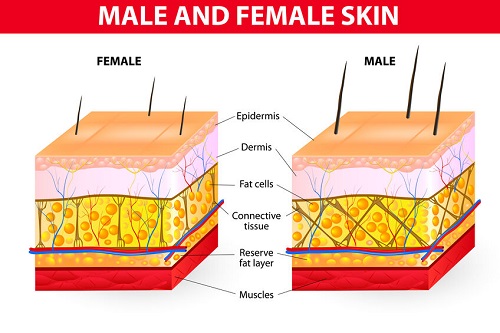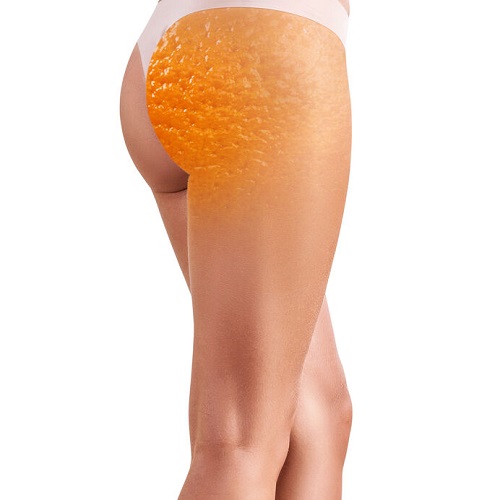What Is Cellulite?
Important Note From Author: spotted this unusual shortcut for getting rid of cellulite
Its all explained in this 3-Step Cellulite Removal Presentation
This is a question that many ask, “What Is Cellulite?”. For many, cellulite can be a source of insecurity and may lead to them scouring the internet to find out what may be contributing to the skin condition and what treatments, if any, can get rid of it. If you have cellulite, you can be assured that you are not alone. Studies show that cellulite affects 90 percent of women and 10% of men.
For those who may not be familiar with cellulite, it is a skin condition characterized by a cottage cheese-like appearance that primarily affects the thighs, legs, and buttocks. However, it can impact other areas of the body as well. While the exact causes for cellulite are unclear, it is believed that poor nutrition and a sedentary lifestyle are the two primary contributing factors. So what are the facts about cellulite?

Factors That Cause Cellulite
Can Hormones Cause Cellulite?
One theory states that as menopause approaches, estrogen decreases causing fat cells to enlarge and circulation to the connective tissues under the skin to decrease. This decrease in circulation causes a reduction in collagen production which is a factor in healthy and elastic skin.
Is Cellulite Genetic?
It is also said that genes play a role in cellulite development. An individual’s metabolism, fat distribution, ethnicity, and normal circulatory levels can be linked to their genetic factors.
Is Cellulite A Result of Diet & Lifestyle?
Dietary and lifestyle behaviors can also play a major role in the accumulation of unwanted cellulite. Eating too much carbohydrates and salt but not enough fiber can contribute to the development of cellulite. People who smoke, do not exercise, or have a sedentary lifestyle may also be subject to the formation of cellulite. Wearing tight clothes that restrict proper blood flow can also cause increased levels of cellulite. Cellulite is more common in people who are overweight, but skinny people can get cellulite too.
While we are discussing weight gain, yo-yo dieting can lead to cellulite on thighs, buttocks, legs, and other areas of the body as well. For those who may not be familiar with yo-yo dieting, it is the practice of losing weight and regaining it, which not only leads to long-term struggles with weight but also increases the risk of developing cellulite on thighs, legs, buttocks, and other areas.
To further illustrate this point, repeatedly gaining and losing weight significantly reduces the skin’s elasticity, which, in turn, makes it easier for fat stores to push against the skin and create the lumps, bumps, and dimples synonymous with cellulite.
Cellulite News Update: stumbled upon this unusual technique for getting rid of cellulite
Its all explained in this 3-Step Cellulite Removal Presentation

Can Men Develop Cellulite?
Although men can develop cellulite too, it is not as common. The arrangement of connective tissues in men is different from that of women. Most men have connective tissues that are arranged diagonally, making them less prone to cellulite.
Women, on the other hand, tend to have connective tissues that are arranged vertically, which increases their chances of developing cellulite. Beyond that, most men have thicker skin than women, further decreasing their risk of developing cellulite. And from a psychological standpoint, the development of cellulite on legs, buttocks, or thighs is generally not as disconcerting for men as it is for women.
Is Age A Factor When It Comes To Cellulite?
As we age, our skin naturally begins to lose elasticity. And with age, fat cells also begin to expand, further compounding skin problems. When you factor gravity into this equation, thinning and sagging of the skin is inevitable. However, while all of these changes are taking place, the septae not only remains intact but also stiffens and contracts, which can make cellulite more pronounced as we age.
It is also worth noting that metabolism slows down as we age. As a result, many of us will develop more fat tissue that can manifest itself in the form of cellulite, which generally occurs when fat stores begin to push outward against skin that has already begun to thin or sag. These are just some of the facts about cellulite.

Can Cellulite Be Prevented?
If your goal is to reduce your risk of developing cellulite on buttocks or other areas of your body, there are a number of lifestyle changes and facts about cellulite that you should consider implementing today:
Maintain a Healthy Weight
Because subcutaneous fat is one of the causes for cellulite on the thighs, buttocks, and elsewhere, maintaining a healthy weight should be paramount.
Adopt a Healthy Diet
You should consider adopting a healthy diet that includes a mix of whole grains, fruits, lean meats, and vegetables.
Exercise
Exercise for a minimum of 30 minutes per day. Studies show that exercise not only contributes to a healthy weight but also improves circulation and muscle tone, which further minimizes your chances of developing cellulite, especially in those areas that are prone to the skin condition like the buttocks, legs, and thighs.
Stay Hydrated
Staying hydrated can also go a long way toward improving skin elasticity and keeping connective tissues strong and healthy. According to healthline.com, you should consume a minimum of eight 8-ounce glasses of water per day for optimal health. Although a healthy diet, exercise, and staying hydrated won’t necessarily get rid of cellulite, they can help you avoid developing it in the first place.
Stop Smoking
Another way to reduce your risk of developing cellulite is by not smoking. After all, smoking can lead to a myriad of health problems, including unsightly cellulite. Studies show that substances commonly found in cigarettes can damage connective tissues and even speed up the stiffening and contracting of the skin. These events not only contribute to cellulite but also leads to fine lines and wrinkle on the face. Additionally, smoking can lead to poor blood and oxygen circulation throughout the body, which can make matters even worse and may lead to even more problems than just cellulite and wrinkles.
Spotted this crazy twist on getting rid of cellulite
Click here to watch this 3-Step Cellulite Removal Presentation


